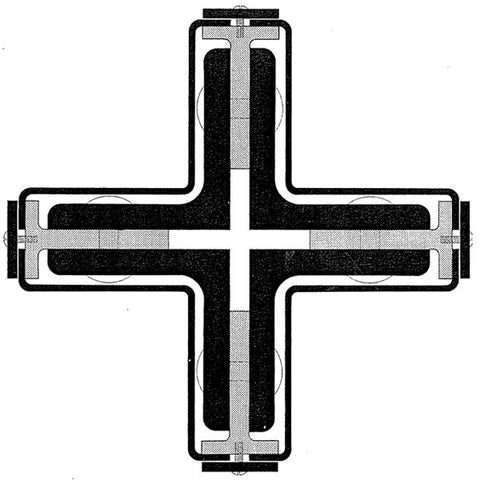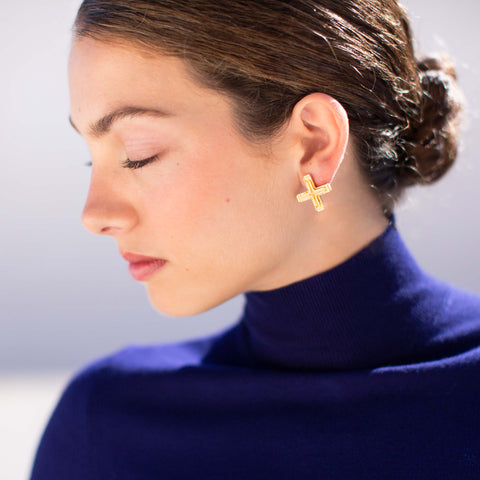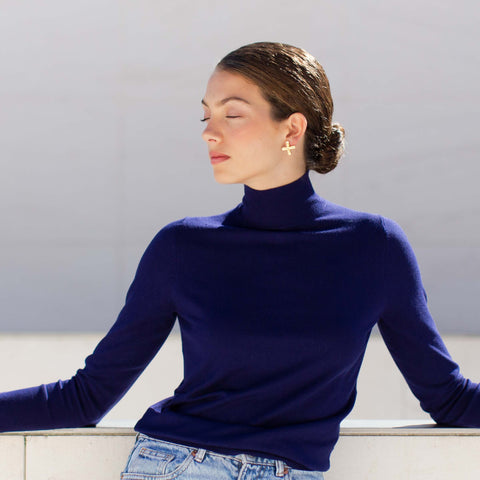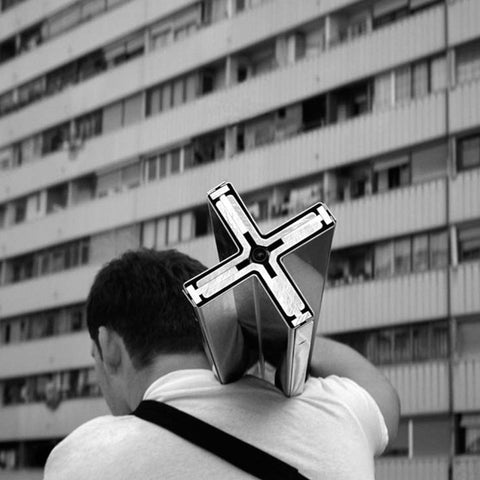GERMAN PAVILION earrings
by SPADA STUDIO
Regular price€135,00 Sale price Rating: 5.0 out of 5.0 5 / 5- Material: 24K gold-plated hypoallergenic brass
- Lightweight & comfortable for everyday wear: 29gr
- Dimensions: ø40mm
- Exclusive design by architect Maria Spada
- Produly made in Spain by our artisans
- FREE shipping on all national orders.
- FREE international shipping on orders over €200.
- Orders are processed within 24-48 hours.
- Delivery time: 3-7 for national orders, 7-14 for international orders.
- You have 30 days to return your jewelry if you change your mind.
- The piece must be unused and in its original packaging.
- If it arrives damaged, we will replace it at no cost.
- Contact us at maria@spadacollection.com to start a return.
Each piece comes in premium packaging, making it perfect for gifting.
We stand by the quality of our jewelry. If your piece has a manufacturing defect within 1 year, we will repair or replace it for free. Simply reach out to us with your order details.
Shop with confidence, every piece is designed to inspire and last.





Handcrafted with passion in our atelier in Spain.
Let customers speak for us
from 34 reviewsEncantada con mis pendientes Spada!
Me preocupaba que fuesen pesados pero son muy ligeros y cómodos! Tanto que te olvidas de que los llevas puestos! Los he estrenado en una boda y han triunfado.
Repetiré seguro!!

Me parece preciosa la combinación de moda y arquitectura para llevar cómodamente y con esa presentación de regalo tan bonita!

Me han regalado unos por el día de la madre y me he parecen preciosos, muy cómodos y ponibles. Muy recomendables!!

Every time I wear them at a wedding or event I get asked about them. Not only I love their unique design, also the story behind them is very cool

I love this bracelet, I always get compliments and people want to know more about this piece. The quality and design are stunning

Every jewel I have purchased for myself or as a gift has been a beautiful acquisition. The quality of the materials and the details is so unique, I would buy it over and over again!

Una joya preciosa, los detalles y la calidad son espectaculares! Luce muchísimo, una pieza super única!

A beautiful and unique piece, I trully love it! It looks beautiful and makes a real diference when I wear it!

Estas piezas son verdaderamente únicas, no solo por su diseño, sino por el mensaje que transmiten, rindiendo un hermoso homenaje a la arquitectura.
My mum is an architect and she lived in Barcelona for many years when she was studying and always talked about how much she liked that city so my sisters and I decided to get her this bracalet as present for her birthday. She LOVEEEED it, and she was really impressed for the original design and the good quality, I havent seen anyhting similar anywhere else so it is a very unique piece to give as a present. Congrats to Spada Studio for the great idea!

I lived in Brazil when I was younger so when i saw these earrings i was super happy to have something that would always remind me of the good times I spent there. Also, they really look amazing, I always get compliments when I wear them! The quality is really good. they are light and easy to wear with any outfi as it can combina casual or more dressed-up looks. Highly recommend them!

They elevate any look, they look stunning. Super comfortable to wear as they are very light. Will definitely buy a second pair.
No suelo dejar reseñas, pero esta vez lo hago porque realmente quiero que más gente descubra esta marca.. Vale totalmente la pena, os animo a descubrirlo por vosotros mismos!
They come in a beautiful blue leather box with a velvet interior, plus a polaroid-style card that shares the story behind the building that inspired the design. It makes you really connect with your jewel! Now every time someone asks about my earrings (this happens a LOT), I get to share the story, and that's the key.. they’re always amazed!
